Therapy Quotes and Therapeutic Jargon
Trauma-Vortex
A breach of the normal flow of energy within body and mind that has resulted in a constriction pattern, both on a physical and mental-emotional level. It is highly charged, disruptive energy which is often traceable somewhere in the body.
Healing Vortex
A healing vortex is something which is set in motion through the therapeutic process of containment, context, and resourcing in order to help resolve and work through the trauma-vortex.
[thrive_leads id=’12447′]
Dissociation
Dissociation on a healthy level is to shut out certain impulses when you need to focus on a task. When you dissociate as a result of trauma, disassociation fragments the body and mind; it shuts off and disconnects in order to preserve the still healthy functioning parts from the overflow from affected parts.
Reenactment
Reenactment happens mostly on an unconscious level. It occurs when we find ourselves in situations that are somewhat similar to our past. Think of getting involved in abusive relationships, being prone to accidents, repeatedly being in a victim role, putting oneself in danger, or getting attracted to the “wrong” kind of people. It serves a purpose, as the unconscious is looking for a way to resolve past issues. It is not for you to avoid these situations, but to bring them into awareness so that eventually, when fully seen through, there is no need for you to engage in reenactment and it naturally drops away.
Resourcing
Resourcing serves to provide tools to resolve Trauma. An initial trauma is caused by feeling overwhelmed; it is a breach of one’s capacity to deal with the situation at hand. When these emotions resurface during the therapeutic work, it is necessary to provide strengths and energy to move through them. Different approaches can be applied to achieve this: slowing down the unfolding of the therapeutic process, bringing in a new perspective, using breathing exercises, finding a safe place in the body, and many other methods.
[thrive_leads id=’12447′]
Containment
Containment, context, and resourcing go hand in hand. Containment is being able to hold the space for what is happening in the moment. This applies especially when Emotional Residue within the body-mind systems are addressed. Slowing down the therapeutic process is a big help in containment, as is being in a safe place, trust in the therapist, and a willingness to work with all the tools provided through resourcing.
Context
I use the word context to illustrate the meaning and interpretation we give to a certain event or period in our lives. Within the therapeutic process, it is for us to examine if these meanings and interpretations are correct or not, and whether or not it serves a purpose to hold on to certain interpretations. Additionally, we must examine the relationships between the continuing of Post-traumatic Stress and the narrative about what happened that we keep telling ourselves.
Emotional Residue
Is a high energy charge of the nervous system due to a traumatic event. This can be caused by developmental trauma or incidental trauma. Emotional residue causes disruption of health and normal functioning in daily life.
Therapeutic Process
The whole interaction between a therapist and client can be named a therapeutic process, though I’d like to make a distinction here between talking about one’s feelings and talking into one’s feelings. The latter is what I refer to as the therapeutic process, as it actually addresses, processes, and resolves Post-Traumatic Stress Disorder. The therapeutic process is facilitated by tracking and verbalizing body sensations.
[thrive_leads id=’12448′]
What did you think of these therapy quotes and therapeutic jargon? Leave your comment below.
